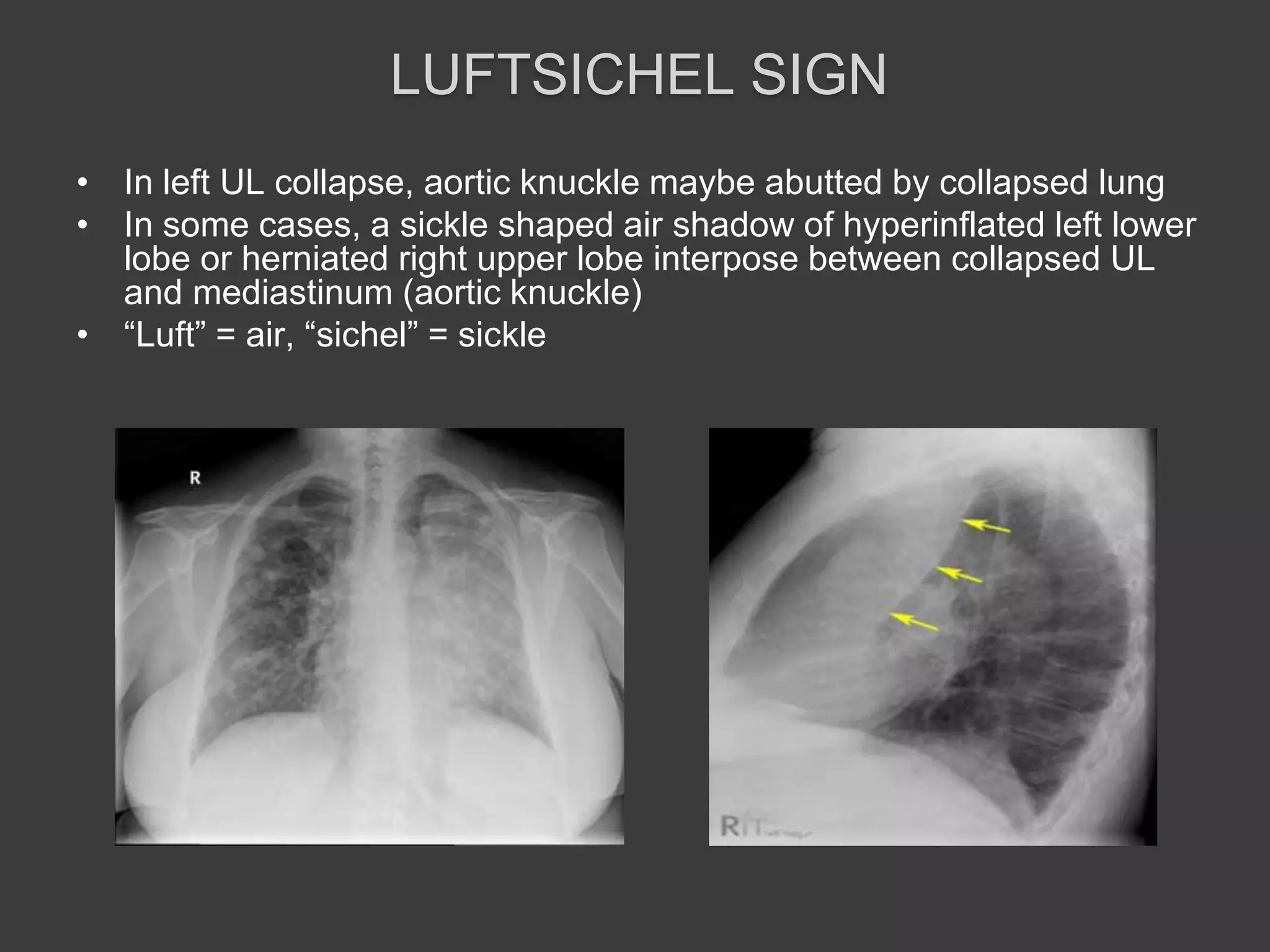This document provides information on interpreting abnormal chest x-rays. It describes what different areas of the chest appear on x-rays and various pathological findings. Key points include descriptions of alveolar vs interstitial lung diseases, different types of consolidations and pneumonias, lobar vs bronchopneumonial patterns, signs of lung collapse, and different appearances of diffuse lung diseases including reticulonodular shadowing and honeycombing. Common linear and band shadows are also outlined along with other findings such as air bronchograms, silhouettes, and Kerley lines.














































































































































